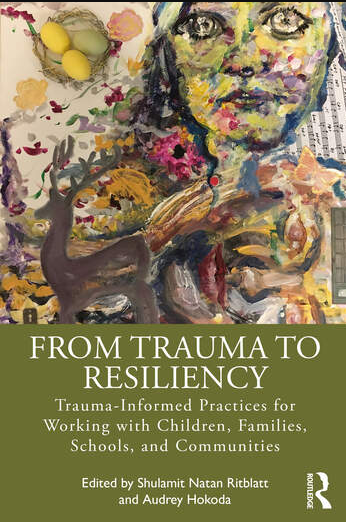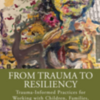Back in 2019, we began planning to write a book, From Trauma to Resiliency, that would describe the experiences of survivors who have experienced multiple traumas and who have benefitted from relationship-based, collaborative family-school-community-based services. We asked colleagues doing amazing work in San Diego County to contribute chapters, and they shared stories of oppressed, traumatized groups of survivors that include, people who have faced abuse, war, and poverty, institutionalized children in Mexico, Indigenous youth living on reservations, Middle Eastern refugee mothers with young children, individuals who identify as LGBTQIA+, and children and youth involved in child welfare, foster care and juvenile justice systems. The chapters describe strengths-based trauma-informed strategies tailored for each group, showing how the neuroscience of trauma and trauma-informed principles can guide the development of effective relationship-based interventions. We received approval for our prospectus from Routledge editors in Fall 2019, met with our colleagues who were contributing chapters in early 2020 to set up a calendar of check-ins, and began the journey of writing and editing our first book which was finally published in Oct. 2022.
The writing of the book was an impetus for our continued inner journeys to understanding our families’ histories with trauma and their triumphs in becoming resilient. These dives inwards were the most difficult ones and the process required continual self-reflection and self-care. This was especially true during pandemic times when we were all socially isolated, and anxious about our health and the well-being of our loved ones and others all around the world. During daily calls with family members and extensive research into events impacting their lives, we viscerally felt their trauma experiences. Like peeling an onion, together we unpeeled the layers and discovered that our families’ cumulative traumas include early loss of parents, food insecurity, poverty, violence, physical and sexual abuse, being refugees, and historical traumas due to persecutions, discrimination and incarceration. We found ourselves working on a paragraph, feeling overwhelmed and needing to take breaks that included, taking walks and swimming, listening to music, staring aimlessly at the TV screen, hugging and playing with our kids and grandkids, and cooking for loved ones. We felt fortunate to have each other during the writing process to vent and reflect, and we felt hopeful and inspired by the stories depicted in the book chapters describing the resilience of survivors and the innovative interventions that helped them. We turned to family, faith, arts, and our cultural roots and community to help support us when we struggled, just as the survivors described in our book chapters did. These were our strategies for self-care; protecting ourselves and tapping into our strengths to shield ourselves from experiencing secondary trauma.
Our hope is that this book will help you, the reader, gain insight into different methods of interventions, and learn about the need to be flexible and open to tailoring psycho-educational and clinical intervention services to specific populations (precision medicine), as one size does not fill all when addressing mental health and well-being in traumatized populations. We hope that we all remember, as professionals in the field, that working with individuals, families, and communities experiencing trauma requires self-awareness, humility and self-care. Let's all remember that trauma can be experienced by each one of us and we all need someone to lean on.
Shulamit Ritblatt and Audrey Hokoda



Comments (0)